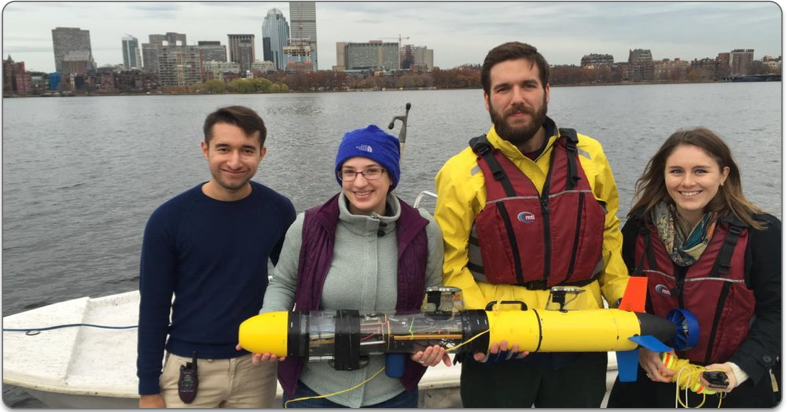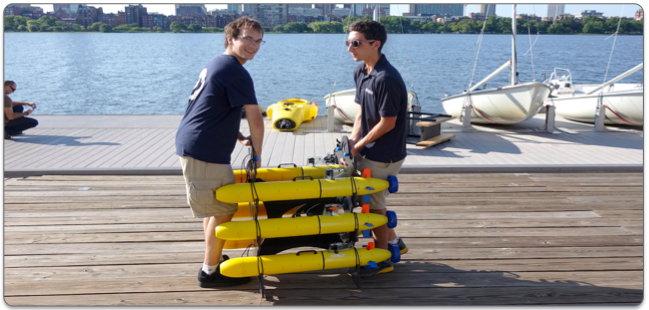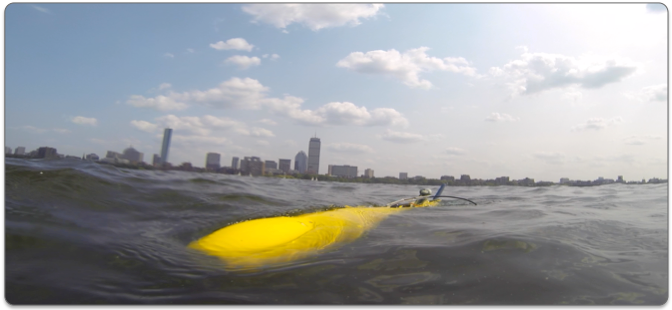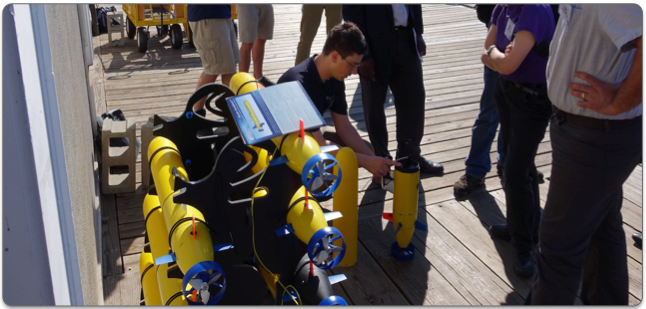Underwater Swarm Navigation


The Bluefin SandShark is a small, one-person portable autonomous underwater vehicle (AUV) manufactured by Bluefin Robotics. The platform comes with a standardized tailcone section, which houses the propeller motor and fin actuation system, battery, an altimeter and pressure/depth sensor, a MEMS IMU, and an antenna for GPS and WiFi.


Our payload section was jointly designed by LAMSS and Bluefin. The payload includes a tetrahedral hydrophone array at the nose end of the vehicle, acoustic data acquisition system, and a computer for autonomy and real-time signal processing. The tetrahedral array gives the vehicle the ability to localize an acoustic source in real time for navigation or tracking. Data recording from the array is triggered by a Chip Scale Atomic clock (CSAC) providing precise time synchronization. A beaglebone black computer runs MOOS-IvP for back-seat autonomy. The vehicle will soon also have an acoustic modem for communications while submerged.

We are currently in the process of integrating a rev. 2 WHOI acoustic micromodem for vehicle command and monitoring. The entire vehicle stands at a length and diameter of approximately 125cm by 12.5cm.

Recent experiments have focussed on troubleshooting and fine-tuning the software interface between the frontseat (tailcone section) and backseat (payload section), which allows navigation estimates to be passed from, and control commands to be passed to, the frontseat from the backseat. These tests have successfully demonstrated the external control of the vehicle from our payload, using custom behaviours specified using the LAMSS MOOS-IvP autonomy framework to prosecute user-specified missions. In addition, we are currently using data gathered by the acoustic array to investigate how well the vehicle is able to localize a fixed acoustic pinger - the CSAC allows the vehicle to maintain a precise GPS-synced PPS signal, providingaccurate acoustic range measurements to the GPS-synced acoustic source, while acoustic beamforming and signal-processing allows the calculation of azimuth and elevation angle estimates. The near-term goal is to use these relative range and angle estimates to track and trail an acoustic source that is being towed by one of the LAMSS M200 ASCs.

In the future we hope to use multiple SandShark AUVs with similar acoustic arrays to perform multi-AUV formation control using relative range and bearing measurements. In addition, future work includes the use of our current SandShark equipped with an acoustic line array to characterise the acoustic signature of seabed-lying metallic objects.
Principal Investigators:
- Henrik Schmidt, henrik@mit.edu
- Erin Fischell, efischell@gmail.com,
- Tom Howe, thomhowe@mit.edu
- Michael Benjamin, mikerb@mit.edu















